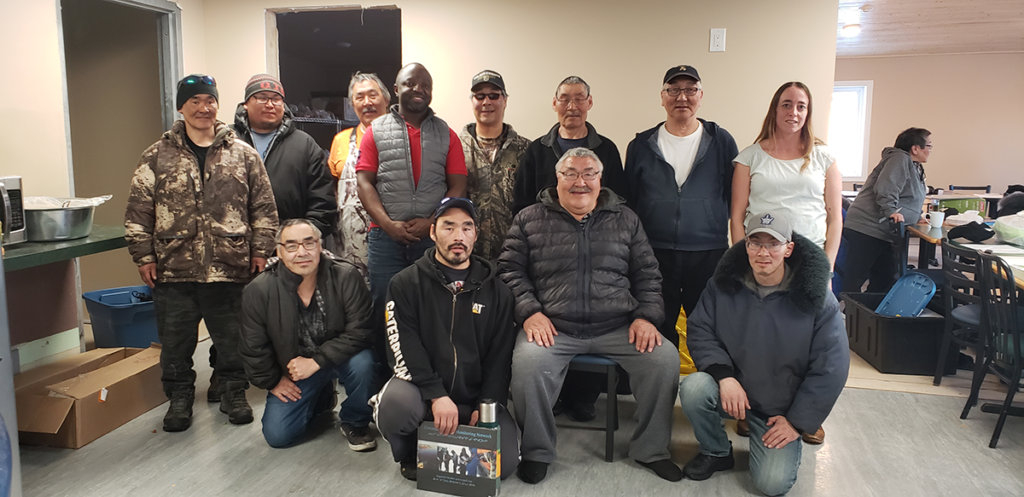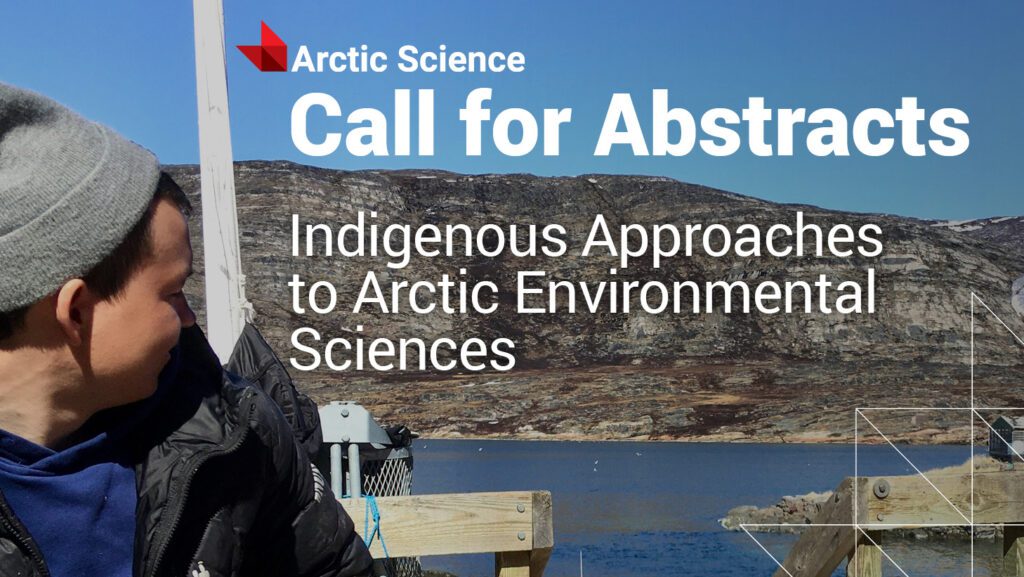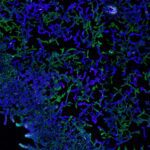In this series, we’re sharing practices of community-engaged research (CER): researchers and community partners working together to advance community goals and science.
Data practices for community-engaged research
The concentration of chlorophyll in a leaf. The GPS coordinates of a caribou. The observed changes to a landscape recorded in an interview.
What’s the connection among the three? They are descriptions of data—pieces of information which can be analyzed.
For community-engaged research (CER), there are conversations to have and decisions to make about data. Like decisions about authorship, conversations about data begin before the research does. The goal of these conversations is researchers and community partners coming to an agreement on who owns the data, where it is stored, who can access it, and how it is used.
In this post, we share data practices to consider whether you’re reading, peer reviewing, or conducting CER.
Learn about data sovereignty
As the Pacific salmon were migrating upstream in rivers in British Columbia, Canada, Indigenous fisheries scientist Dr. Andrea Reid followed their path. As she did, Reid interviewed Indigenous Knowledge holders living among the rivers, who for decades have observed changes in salmon populations.
The interview responses are presented in an open access paper on fish–people–place relationships. Of note is the paper’s data availability statement:
“The knowledge shared in the context of this research remains with the knowledge holders and communities who partnered in this work. Access to interview materials stored in partnering communities’ archives is to be determined by those communities.”
This statement affirms Indigenous data sovereignty—the rights of Indigenous Peoples to govern Indigenous data, defined in the Guidelines for Data Sharing Respecting Indigenous Data Sovereignty as “[comprising] data, knowledge, and information that relate to Indigenous Peoples at both the individual and collective level, including data about lands and environment, people, and cultures.” The statement also aligns with the First Nations Principles of OCAP® (Ownership–Control–Access–Possession).
But extractive approaches—doing research on communities and not for or with communities—remain prevalent today. Co-creation is one way to move away from Western (colonial) research practices to those that support community-driven needs and goals.
Co-create a data sharing agreement
The Nunavut Wildlife Management Board (NWMB)’s Community-Based Monitoring Network (CBMN) generates data on wildlife harvests and hunting routes. The data are collected by Inuit harvesters who use a program called Trailmark on hand-held devices to record their harvests, travels, and any other observations (e.g., if they saw a sick animal).
The data are also owned by the Inuit harvesters, who determine who can access and use their data. These decisions are captured in a data sharing agreement, co-created by the participating communities and the NWMB at workshops dedicated to discussing data governance.
“Data sharing agreements are a community protocol. You try to reach as many people as possible and build the agreement through inclusive conversations,” shares Denis Ndeloh, Director of Wildlife Management at NWMB. “Each community has its own values and concerns. Data sharing agreements should reflect the community’s priorities and respect a community’s rights.”

Community harvesters and CBMN team members work collaboratively to validate data. © The Community-Based Monitoring Network, used with permission.
Reid—who is a principal investigator at the Centre for Indigenous Fisheries—and colleagues echo this sentiment. “Negotiating what constitutes ‘good’ research protocols in a specific community context is an important first step in challenging existing power imbalances, it emphasizes self-determination and opens up lines of communication between the researcher and the community,” they write.
Ndeloh outlines key considerations for a data sharing agreement:
- The motivation for collecting the data is agreed upon. Data collection by the CBMN, for example, is currently used to document knowledge which is available for use by the community, and future generations of the community. Complementary goals, as published by Ndeloh and colleagues, include using the data to inform “decisions regarding the approval of management plans; the approval of the proposed listing of species under the federal Species at Risk Act; the identification of management zones, areas of high biological activity, and critical Inuit harvesting areas; supplementing and correlating data on species abundance and movement patterns with scientific data; and identifying further research needs and questions.”
- Data sharing agreements are legal documents. Work with a lawyer as needed to ensure the agreement is sound and in accordance with applicable law.
- The consent, liabilities, and incentives of the data collection and sharing are understood by the participant. “Take the time to review the agreement so that participants understand what they are agreeing to,” says Ndeloh. For the CBMN safety is paramount and making sure harvesters understand not to compromise their safety to collect data is a priority (e.g., forgoing data collection if ice is too thin or freezing air temperatures prevent using the hand-held device).
The data encompassed in the CBMN agreement, as described by Ndeloh and colleagues “neither follow conventional wildlife study scientific standards, nor match the outputs of participatory Inuit Qaujimajatuqangit social science research.” This “hybrid” of Western scientific information and land-based knowledge does however provide the opportunity to interpret the data together, in alignment with CARE Principles for Indigenous Data Governance (e.g., Responsibility, R2, For expanding capability and capacity: “Use of Indigenous data invokes a reciprocal responsibility to enhance data literacy within Indigenous communities…”).
Interpret the data together
Data analysis is typically solitary in the sense that one person does quality control on the raw data and drafts the “Results” section of the manuscript. For CER, Ndeloh advocates for inclusive validation and interpretation of data.
“Put the data, not the statistics, out there and ask the community: what do you think?” says Ndeloh. “Listen, then write the report, including complimentary interpretations and worldviews of what could be happening.”
The CBMN does both personal and community verification of data. Every six months or so, the NWMB meets with every harvester to verify hunting routes and wildlife sightings. Meetings are also held so communities can review the raw data, which helps validate observations. Ndeloh shares the example of a data point indicating a beaver was spotted at a particular lake but no one else in the community had seen a beaver at that lake for years. “Peer review of the data provides important context,” he says.
Create opportunities for data skills training
Community partners are intrinsic to the collection and stewardship of data collected for CER. Providing space for communities to develop data skills supports self-determination. For example, Inuit youth are trained and employed by SmartICE, a sea-ice monitoring program, to operate equipment and collect data for ice surveys. Community members are trained and hired as data clerks for the CBMN to upload data from devices and manage other logistics for the program.
Think before and beyond the data
While a spectrum of involvement exists for CER, Ndeloh highlights the importance of community engagement before deciding which “knowledge gap” one plans to address.
Based on searching scientific literature there may appear to be a lack of understanding on say the distribution of orca whales in the Arctic. But if asked ‘Do you think these data are required?’, communities living in the Arctic can “provide examples of what might be the true knowledge gap,” says Ndeloh.
Engaging with communities and learning from their knowledge isn’t only about the data, Ndeloh reflects. “It’s about appreciating that different worldviews exist, and being willing to be challenged.”
We thank all the community partners and researchers who shared their knowledge and feedback with us throughout the development of the author resources and blog series.
Blog post written by Natalie Sopinka, journal development specialist at Canadian Science Publishing.
Banner image by Sean Booth | Caption: Two bacteria, Klebsiella (green) and Pseudomonas (orange) are growing together in a colony on agar. Timelapse fluorescence microscopy shows the proportion and location of each species every half hour over 18 hours. This shows how the ecology of their interaction can change over time.
Call for Abstracts image caption: Hunters take their lunch in the small settlement of Sarfannguit, located within the Aasivissuit-Nipisat UNESCO World Heritage Site, Kalaallit Nunaat (Greenland).





